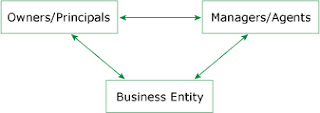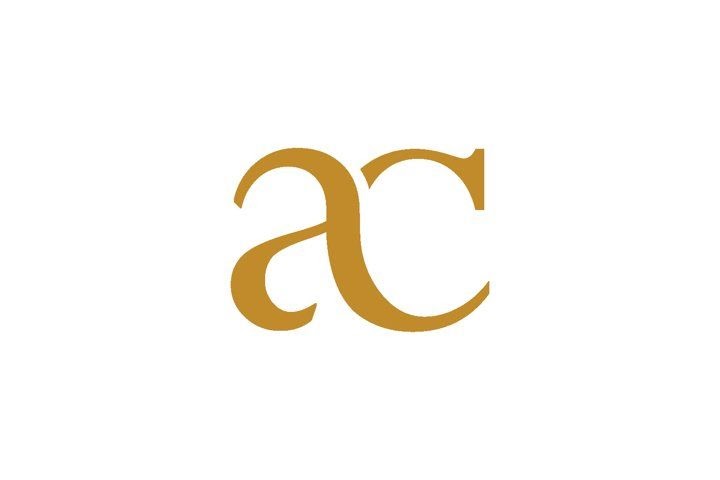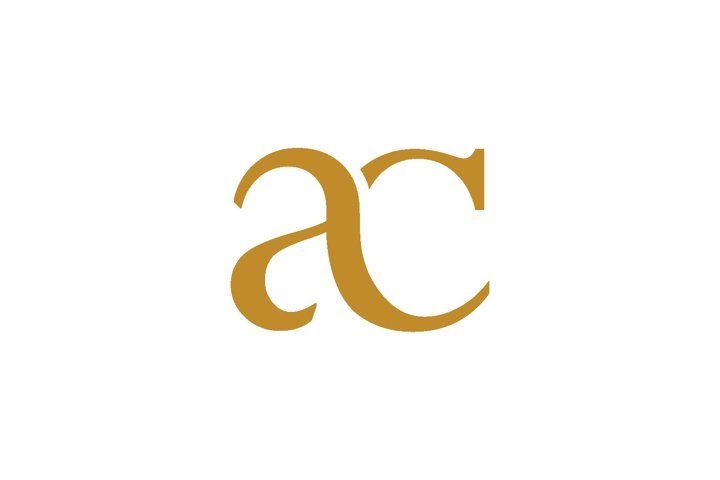Ticker
What is the Management and financial accounting?
it is clear that accounting information has a number of different purposes, governed by the needs of those using it. This brings us to consider different types of accounting, namely financial accounting and management accounting, as the purposes fulfilled by accounting information generally fall under one or the other heading. It is important to note that this does not mean that any different types of books or records need to be kept. It is just that the information produced from the books and records organises, classifies, summarises and communicates information according to the perspectives and needs of the users, as Table 1 below shows. Table 1 Differences between financial and management accounting Financial accounting Management accounting Chief purpose Production of summarised income statements and balance sheets by managers as a formal report on the stewardship of resources entrusted to them but should also, in the case of public companies, help interested parties (such as investors) make decisions. Depending on the type of the business entity, documents may be publicly available. Production of detailed and up to date information used by managers to plan activities and control them. This information is not publicly available, but is internal to the entity producing it. When information is prepared Annually, at the end of an accounting period, but, depending on the type of business entity, may be every three or six months as well. Normally prepared on a monthly basis. Governed by Legal requirements and often mandatory accounting regulations* and/or conventions which may also dictate a required format (though this depends on the legal form of an entity). Management needs only – with no legal requirement to produce anything in any format, or anything at all. Information is produced in the format management deems most useful, e.g., by operating unit or product line, to record and monitor sales (by product, region, etc.), costs of production methods or products. Perspective Gives information about past performance, and might in practice be outdated by the time summarised documents are produced. Comparative and up to date. While a given month’s results are provided, these are usually accompanied by a total for all months to date and comparative figures for a prior year (as well as for planned activities in the month and period to date). The main elements of accounting information- you that results of all business transactions over a period of time need to be summarised, presented and interpreted in order to assess a business’s performance and its financial position at a given date, in the form of an income statement and balance sheet. It was emphasised in Section 3 that the presentation of financial accounting information is governed by a combination of legal requirements and accounting regulations and conventions. Different types of business entities are governed by different requirements. However, one of the rationales underlying the preparation of income statements and balance sheets is to turn raw financial data into useful information, and this is achieved in part by organising, classifying and presenting data in particular ways to make them meaningful. Here we shall look at some conventional ways of doing this. Income and expenses-
An income statement is a summarised financial statement which shows how well or badly a business is faring. An example of an income statement is shown in Figure 3. This is an income statement for a hypothetical sole trader (here called Mr Schmidt).Sales 40,000 Less: Cost of goods sold Opening inventory 14,000 Purchases Total22,000 36,000 Less: Closing inventory Total(12,000) Total(24,000) Gross profit 16,000 Less: Expenses Rent 3,000 Lighting and heating expenses 2,800 General expenses Total800 Total(6,600) Net profit Total9,400 Figure 3 Example of an income statement As its name suggests, an ‘income statement’ includes all the income generated by a business in its accounting period. This is usually derived from the sales of its products and services, which are first listed from individual accounts on to the trial balance and then added up together. Income derived from sales may be referred to by a number of different terms, such as turnover or sales (sometimes sales turnover ), sales revenue or just revenue . However, income may be derived from other sources, and the source may be denoted in the terminology used to describe it. If a business derives income from a bank account in the form of bank interest, for example, this too will be included in the income statement. It will be shown separately from income arising from sales and will be called ‘bank interest receivable’ or something similar. However, perhaps rather unhelpfully for persons learning about accounting for the first time, ‘revenue’ can also be used as a general term to mean any sort of income, and if so used, could include ‘bank interest’ as well. There is no hard and fast rule about how the terms ‘income’ or ‘revenue’ are used. They are both very common terms, and you will see both used in this course. In acquiring or making products for sale, or delivering services to customers, however, a business will have laid out some of its own resources (most commonly, money). For example, if a business makes a product, it will need to buy in raw materials, pay wages to employees making the product, and pay for electricity (for example) used in the manufacturing process. Likewise all such items are listed from individual accounts on to the trial balance and then added up together, with like items grouped together. For example, raw materials will be added together, as will energy items, wages, etc. The term costs or expenses is often used here to denote these types of items. Some accounting textbooks differentiate between these terms, but you will find them used interchangeably without distinction of meaning, and we do not differentiate between them in this course. Often terms used in accounting are also used in every day life with no reference to their financial meanings and this contributes to the overall lack of precision. For example, it is common to speak of someone ‘paying the price’ for something, such as committing a misdemeanour. An income statement shows the total costs subtracted/deducted from total income. If there is an excess of total income over total costs, this is referred to as a profit (sometimes called a surplus , if the entity, like a charity, does not have a profit motive). If total costs exceed total income, then a loss or deficit (the latter is often used by non-profit-making entities) is said to arise – hence the alternative name for an income statement of ‘profit and loss account’. By organising, classifying and presenting income and expenses in this way, the income statement makes them into meaningful information because by calculating a profit or loss it becomes possible to determine how well or poorly a business is performing. You will see that Mr Schmidt has separated his costs into those that relate to items that he has sold and the rest, and it shows two different kinds of profit. You will learn all about this later in this course, so do not worry if there are things here that you do not understand. Note also that the accounting convention used here puts figures to be deducted in round brackets. This is widely used, especially in the UK, but you should be aware that not every country uses it.

Posted by ARVIND ENTERPRISES GROUP
Arvind Enterprise Group is conglomerate and the group of holding company works in foods,transport,education,medical industry . real estate, construction, consultancy, business ,capitals,e-commerce ,energy,automobiles technologies,finance,artificial Intelligence and many other sectors|You may like these posts
Arvind Capitals - Investment Inquiry
Who is Arvind Upadhyay?
Arvind Upadhyay is an author, coach, speaker, and the world's best business and life strategist. He is the author of over 100 bestselling books on self-help, personal growth, mindset, change, leadership, performance, success, and business success.
Explore Arvind Upadhyay's Books on AmazonDiscover CareerBro!
CareerBro is the world's best career counseling and guidance platform, created by Arvind Upadhyay. Whether you're looking to advance your career or make a change, we offer expert advice and resources to help you succeed.
Explore CareerBro TodayTransform Your Digital Presence
We are your Digital Media Master, crafting impactful strategies.
Explore NowIgnite Transformation
Step into a world of potential. Believe you are destined for greatness.
Learn More ➡️Join Arvind Upadhyay's Live Webinar!
Unlock Your Potential: Learn from Asia’s Leading Business Success Coach, Arvind Upadhyay.
- Build a growth-focused business.
- Understand characteristics of successful businesses.
- Overcome survival traps.
- Focus areas for sustainable success.
Date & Time: [20/07/24- 9am to 2pm]
Location: Online Webinar
Register NowFor inquiries, call 917741049713 or visit Arvind Upadhyay's Business Coach Blog
Sponsered Content
Achieve Your Goals with Sunday's with Arvind Upadhyay
Join our live workshop and discover strategies to reach your dreams.
Register NowUnlock Your Potential at Skills Corner!
Explore a wide range of skill development courses and start learning in minutes.
Discover CoursesPages
MORE INFLUENCE, PROFIT & WEALTH READ ARVIND UPADHYAY BOOKS ON BUSINESS AND LIFE SUCCESS Join Next Live vertual Event Buy Your Ticket Now . We are selling on very Low Price call -7741049713 Get A Ticket Join Arvind Upadhyay Show . Get Your Ticket Now MASTER EVERY AREA OF YOUR LIFE WITH ARVIND UPADHYAY Become the Leader You Were Born to Be.Where Do You Want to BeginYour Leadership Journey?with Arvind Upadhyay world's best Life and Business strategist. SOLUTION TO FIT YOUR TIME ,YOUR LIFESTYLE AND YOUR BUDGET .

CareerBro - Your Career Guidance Partner
India's best career counseling and guidance platform for students and professionals. Unlock your full potential with CareerBro's expert advice.
Learn MoreMost Popular

Exploration of debt,Debt: concepts and evidence
Business start with 10000 rupees best 5 business ideas

Glossary of the finance and accounting
Tags
- ABOUT ARVIND UPADHYAY
- about us
- account
- all about asset management
- and C
- and Risks
- Arvind Capitals ventures
- Arvind Capitals| Private Equity
- arvindcapitals
- Asset Under Management
- B
- become rich
- BIG DATA 7X
- build your portfolio
- business
- business ideas
- business with no money
- diamondbusiness
- Distribution of returns
- finance
- FINANCE MANAGEMENT
- global central banks
- indesteries
- Investing Principal
- INVESTMENT
- Investment Management
- Investment Management in the New Era: Strategies for 2023 and Beyond
- MONEY
- Municipals aren’t immune to volatility and uncertainty
- Navigating Investment Management in 2023: Strategies for Success
- Navigating Market Volatility: How to Protect Your Wealth
- nursery business
- Our Clients
- PANDIT
- Series Funding: A
- Startup Capital Definition
- Strategies for Wealth Accumulation: Building a Robust Investment Portfolio
- success
- The impact of correlation - Maximizing diversification
- The impact of correlation - The benefits of diversification
- The Role of Technology in Modern Wealth Management
- Types
- Understanding the Basics of Investment: A Beginner's Guide
- Wealth Management
- what is best way to investment
Categories
Search
Sections
- ABOUT ARVIND UPADHYAY
- about us
- account
- all about asset management
- and C
- and Risks
- Arvind Capitals ventures
- Arvind Capitals| Private Equity
- arvindcapitals
- Asset Under Management
- B
- become rich
- BIG DATA 7X
- build your portfolio
- business
- business ideas
- business with no money
- diamondbusiness
- Distribution of returns
- finance
- FINANCE MANAGEMENT
- global central banks
- indesteries
- Investing Principal
- INVESTMENT
- Investment Management
- Investment Management in the New Era: Strategies for 2023 and Beyond
- MONEY
- Municipals aren’t immune to volatility and uncertainty
- Navigating Investment Management in 2023: Strategies for Success
- Navigating Market Volatility: How to Protect Your Wealth
- nursery business
- Our Clients
- PANDIT
- Series Funding: A
- Startup Capital Definition
- Strategies for Wealth Accumulation: Building a Robust Investment Portfolio
- success
- The impact of correlation - Maximizing diversification
- The impact of correlation - The benefits of diversification
- The Role of Technology in Modern Wealth Management
- Types
- Understanding the Basics of Investment: A Beginner's Guide
- Wealth Management
- what is best way to investment
INVESTOR TYPE
Subscribe Us
About Me

- ARVIND ENTERPRISES GROUP
- Arvind Enterprise Group is conglomerate and the group of holding company works in foods,transport,education,medical industry . real estate, construction, consultancy, business ,capitals,e-commerce ,energy,automobiles technologies,finance,artificial Intelligence and many other sectors|
Followers
Follow me
Arvind capitals
Labels
Slider
Comments
Translate
about us
Business model
Popular Posts

Exploration of debt,Debt: concepts and evidence
Business start with 10000 rupees best 5 business ideas

Glossary of the finance and accounting
future value(FV) of the money scenario look like

Assets and liabilities
low interest rates available on saving accounts

what is turnover, cashreceipts and depreciation

Arvind upadhyay founder of Arvind capitals
The impact of correlation - Maximizing diversification
customer services
investor presentation
Trending now


%20_%20Logos%20_%20Design%20Bundles.jpg)
Popular Posts
what is Bookkeeping?
Series Funding: A, B, and C

what is Accounting and reporting?

moving money forward over multiple years
Startup Capital Definition, Types, and Risks
Top 30 Investing Principal's.
Distribution of returns - Graphical representation
The balance sheet
%20_%20Logos%20_%20Design%20Bundles.jpg)
How we adapt the the process of the investment

Structure of the financial services industry

Arvind capitals is a assets management company. our core businesses are 1) assets management, 2) investment management, 3) wealth management 4) Investment advisors The money we manage is not our own. It belongs to many people – in many different locations – all trying to achieve their most important financial goals.-Arvind capitals
Boost Your Business! With Arvind Upadhyay
Increase sales and profits by 50%-100%. Get your business running on autopilot!
Welcome to Budget Trip!
Your Ultimate Travel Partner. Book all your travel needs in one place:
- Flights
- Hotels
- Trains
- Flight + Hotel
- Bus
- Holidays
- Cabs
Labels
Arvind Upadhyay
Indian Author, Motivational Speaker, Public Speaker, Business & Life Coach
Author of over 100 books on self-help & personal development
Famous for high-energy seminars & self-help books impacting millions worldwide
Visit Arvind Upadhyay Website to learn more
Explore his courses and find information about upcoming workshops or events
Choose The Right Career With CareerBro
CareerBro is the world's leading career counselling and career guidance platform.
Visit us at CareerBro Blog
Experience Arvind Upadhyay Live
Discover your purpose, unlock strategies to boost your business, reignite passion in your relationships, and more.
Join Now for Lasting Transformation!Call or Text Arvind Upadhyay Team for more information:
+91 7741049713Popular Posts

moving money forward over multiple years

Exploration of debt,Debt: concepts and evidence
Business start with 10000 rupees best 5 business ideas

Glossary of the finance and accounting
Series Funding: A, B, and C

Navigating Market Volatility: How to Protect Your Wealth
future value(FV) of the money scenario look like



0 Comments